NOTE: This is an earthcache, there is no physical container to find at the coordinates. To get your smiley for the cache, e-mail your answers for the questions below to the cache owner.
This Earthcache is located with permission from The Bahamas Ministry of Tourism. The Queen’s Staircase is open year round and has no admission fee. The coordinates of this earthcache take you near the entrance at the top of The Staircase.
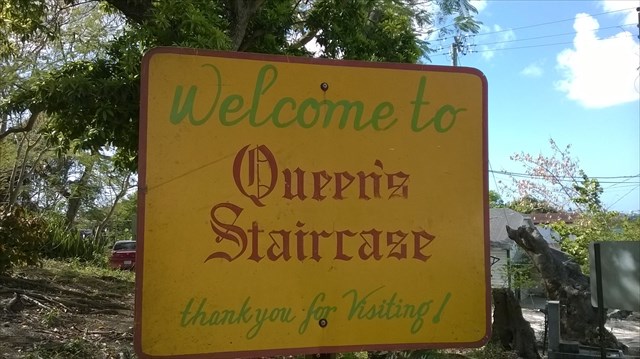
The Queen’s Staircase:
Construction for this impressive staircase began around 1793. Its purpose was to serve as a protected passage from Nassau city to Fort Fincastle. These 66 steps were hand-carved out of solid limestone rock by approximately 600 slaves, taking over 16 years to complete. These steps were later named in honor of Queen Victoria, who reigned in Britain for 64 years from 1837 to 1901. Today, the Queen’s Staircase still acts as both a passageway to Fort Fincastle and a shortcut to Bennet’s Hill, the highest point in Nassau. To prevent erosion the steps of the staircase are now faced with brick, however the staircase walls are the original rock. There is a geological story behind this staircase and this is where we begin…
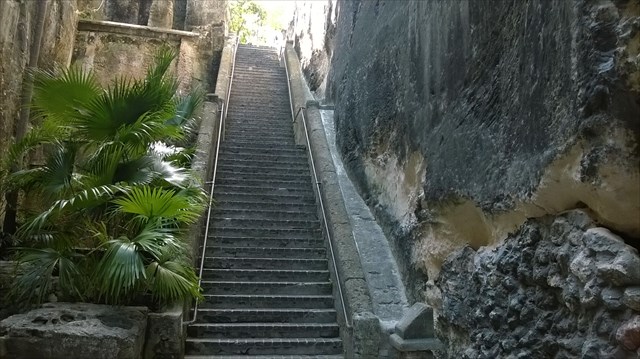
The Bahamas:
Located only 50 miles off the coast of Florida at its nearest point, the Bahamian Islands, of which there are 700, form a northwest-southeast trending archipelago. The parts of the islands that you are seeing are the highest parts of a shallow underwater platform ( The Great Bahama Bank). The Bahamas are in fact so shallow that if the sea level in the Bahamas was to only drop 20 feet, the land of the Bahamas would be vastly increased.
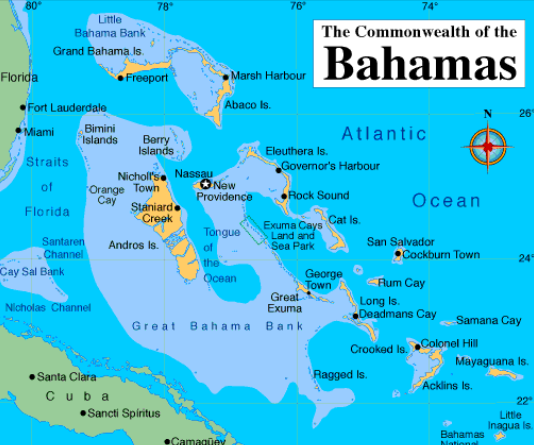
Limestone:
The actual platform that the Bahamas is resting on is made of calcium carbonate. Calcium carbonate is often referred to as limestone, which is a sedimentary rock. Limestone is composed of skeletal fragments of marine organisms. The skeletal fragments and marine organisms found here indicate that the rock at this location is actually an old eolian sand dune.
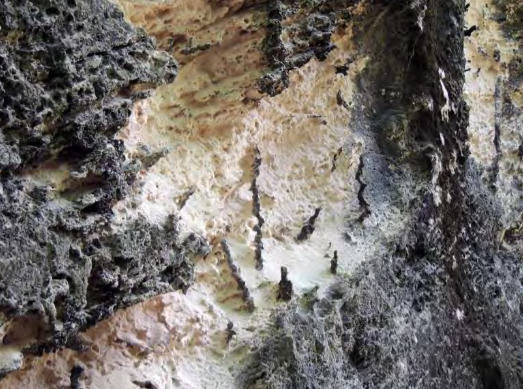
Eolian Dunes:
You will notice that while looking at The Queen’s Staircase there is quite an elevation difference from the top of the rock to the bottom. The staircase is actually carved out of the sand dune. The sand dune here was formed when global sea level fell during the Pleistocene Ice Age. The sea level rose and fell four different times over many centuries. Each time the sea level rose and fell, new sediments washed up onto the beaches.
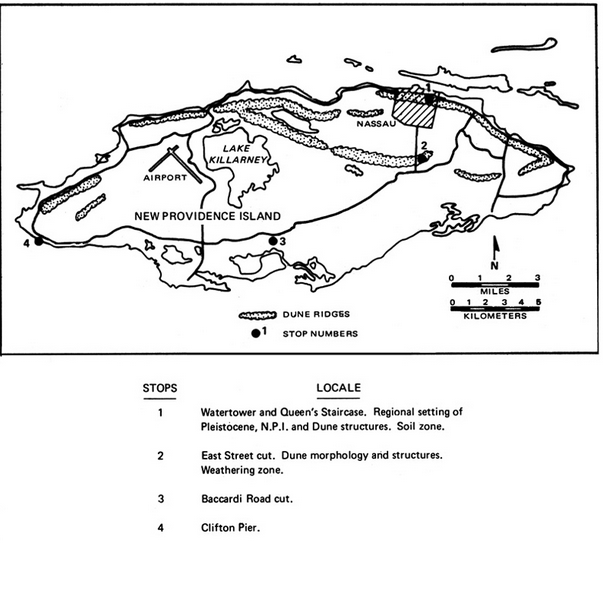
The sediment that was washed up on the shore was then transported into a dune formation by the wind. For this reason the dunes at this location are called eolian dunes, because they were created by the wind. The word “eolian” comes from the Greek God "Aeolus" who was the God of the winds. Once the dunes were created, they underwent a cementation process and calcium carbonate (limestone) was formed. Due to the dunes location close to the shore, the cementation process occurred rapidly because of sea spray and rain water.
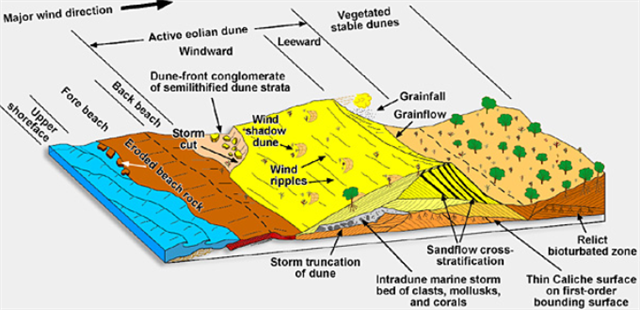
Sand Movement:
Dunes are mostly made up of accumulated sand grains. In most cases a sand dune forms an asymmetric cross-sectional form with a gentle windward slope and an steep leeward slope called the slip face. Saltating (jumping) grains move up the windward slope and then come to rest at their angle of repose on the downwind side in a zone of stagnant air.
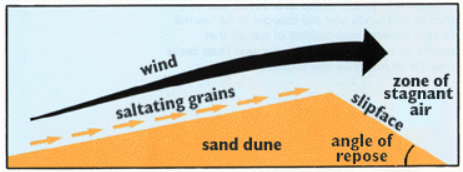
Now it is time for the questions. To get credit for the cache, please answer the questions below. When answering the questions do your best. It is more important that you learn a new concept about our earth and can apply your knowledge, rather than have a precise answer.
Questions:
From the top of the stairs, near the coordinates, walk down the first flight of stairs to answer the following 3 questions:
1- Please write the Queen's Staircase Earthcache and tell us how many people are in your group.
2- Describe the color, shape and size of the ancient marine organisms (examples: ammonites, snails, shells etc...) at this location that you see in the walls found in the dune which makes up the Queen's Staircase.
3- Look to the East wall and describe the angle of the strata on the wall.
Now proceed down the stairs and walk toward the north end of the dune to answer questions 4 and 5.
4- Look to the East wall again and describe the angle of the strata on the wall in this area.
5- When you compare the difference in angles of the strata inside the ancient sand dune, what can you infer about the direction of the prevailing winds that created the dune?
Thank you for visiting this earthcache. Please send your answers to the above questions to the cache owner. In your "found it" log feel free to write about your experience, but don't include the earthcache answers. Thanks and we hope you enjoy beautiful Nassau, Bahamas!

Sources:
http://www.bahamas.com/node/50510#zoom=14&lat=24.98271&lon=-77.45705&layers=00B0T
http://gec.cr.usgs.gov/archive/eolian/
http://www.nassauparadiseisland.com/what-to-do/island-culture/
http://jrscience.wcp.miamioh.edu/fieldcourses06/PapersMarineEcologyArticles/GeologyoftheBahamasFinalP.html
http://www.calvertmarinemuseum.com/DocumentCenter/View/731
http://www.motygido.co.uk/bahamas_birthplace.htm
http://en.wikipedia.org/wiki/Eolianite
http://archive.org/stream/naturalistinbaha00osbo/naturalistinbaha00osbo_djvu.txt
http://www.sepmstrata.org/page.aspx?pageid=420
http://www.earthonlinemedia.com/ebooks/tpe_3e/eolian_systems/dunes.html